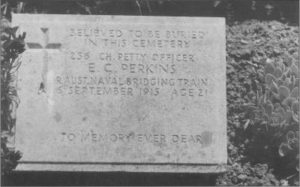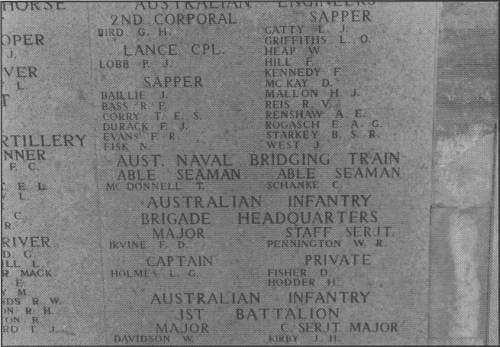- Author
- Giles, Sarah, Midshipman, RAN
- Subjects
- History - WW1
- Tags
-
- RAN Ships
- None noted.
- Publication
- March 1998 edition of the Naval Historical Review (all rights reserved)
From sipping apple tea at a cafe in Istanbul to a Dawn Service at Anzac Cove, the experiences were many and varied for the 80 staff and cadets from the Australian Defence Force Academy who visited Turkey in May for the Gallipoli Battlefield Tour. This trip was first initiated in 1996 and hopefully will become an annual event for the Defence Academy. It not only provided us with a greatly increased understanding of our Australian heritage and the exact context in which the Anzac tradition was forged but it also introduced us to the wonders of Europe and its ancient past.
The trip commenced with two days in Istanbul. During this time we crammed in as much sightseeing as possible, including the Blue Mosque, Haga Sofia and ferry trips across the Bosphorous into Asia. These activities were interspersed with many a donor kebab and Turkish delight. Of course, apart from the elusive belly dancers (the search for which occupied many a cadets’ evening), the main attraction of Istanbul was the Grand Bazaar. Here we ran riot, haggling over the prices of fake Calvin Klein shirts, fezs, jewellery, food, leather goods – anything! Never have our arguing skills been so well practised.

Following a visit and tour of the Turkish War College, where Turkey’s more senior officers are trained, we moved on to the main aim of the trip – an exploration of the Gallipoli Peninsula. From our base in Canakkale, a town on the Asian side of the Dardanelles, we set out in four groups to different parts of the peninsula to begin our trek. Before beginning, we sat on the deck of the replica of the Turkish Minelayer NUSRAT and listened to a Turkish historian’s view of the campaign including the fortification of the Dardanelles and the defences which the Allied navies, including our own AE2 submarine, attempted to penetrate. I had not previously comprehended the narrowness of the Straits at this point and it amazed me that any ship was able to draw even close to the Sea of Marmara.
For me, the time at Gallipoli provided some of the most moving moments and experiences of my life. Our group started our travels in the south, at and around Cape Helles. From the towering Turkish Memorial which dominated the landscape we looked across to V, W, X and Y beaches where the British and French landed 82 years ago. That afternoon we hiked up to a quaint village, known in World War One as Krithia, and the site of a famous battle involving Anzac troops. The only reminder left is a small war museum.

The highlight of the trip came over the next two days during which we explored the north of the Peninsula where our country had its so called “baptism of fire”. We dozed near the Lone Pine cemetery at the site where 2,000 Anzacs were killed on 6 August 1915. We posed for photos at the Nek where the 3rd Light Horse Regiment, of Western Australia, charged up a ridge the width of two tennis courts only to be mown down by Turkish gunfire, as depicted in the movie “Gallipoli”. A small group of us left the main road to scramble up Rhododendron Spur as the New Zealanders had done 82 years earlier in an attempt to capture Chunuk Bair, the highest point on the Peninsula. In doing so we discovered a trail of evidence of the fierce battles that took place: the remains of trenches, live rounds, a skull half destroyed by shrapnel, pieces of ceramic rum jars possibly issued to the ANZACs to provide them with some “Extra Courage” before battle, and the find of the trip – A New Zealand hat badge.




